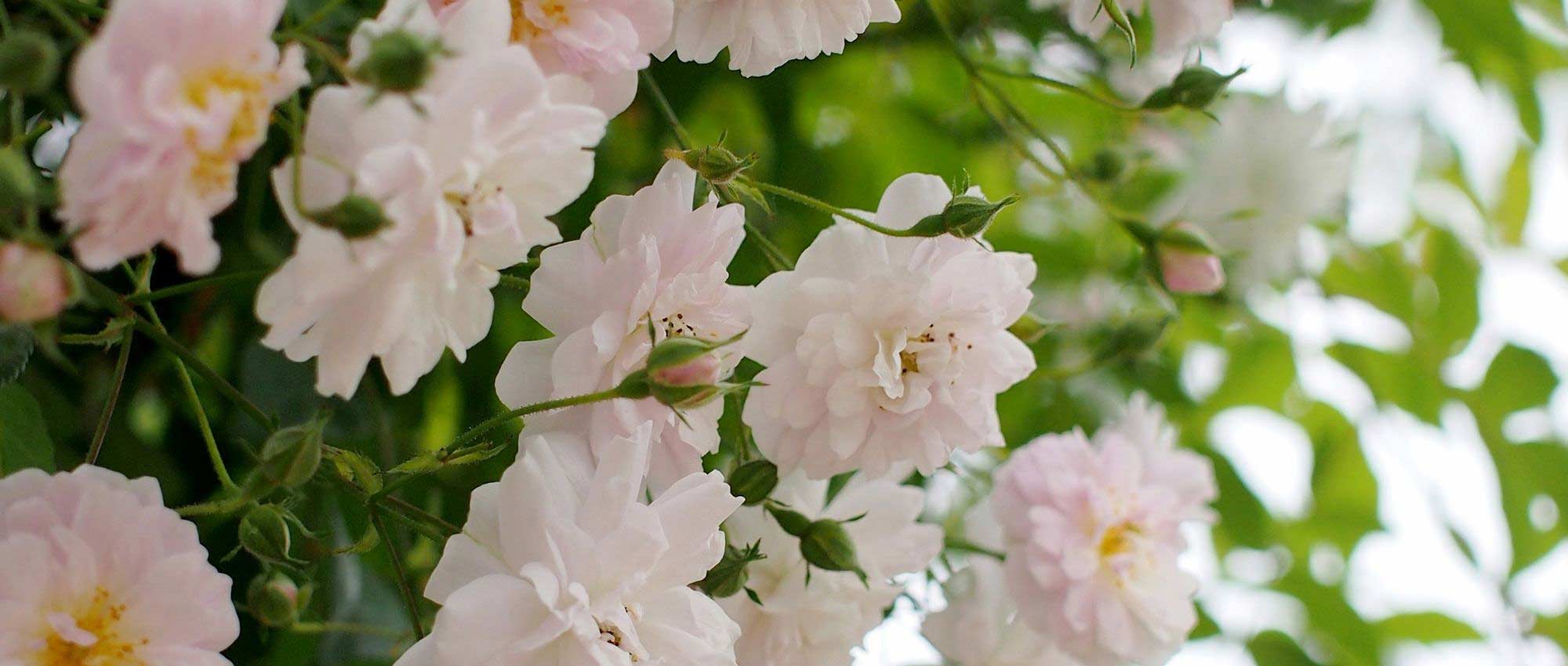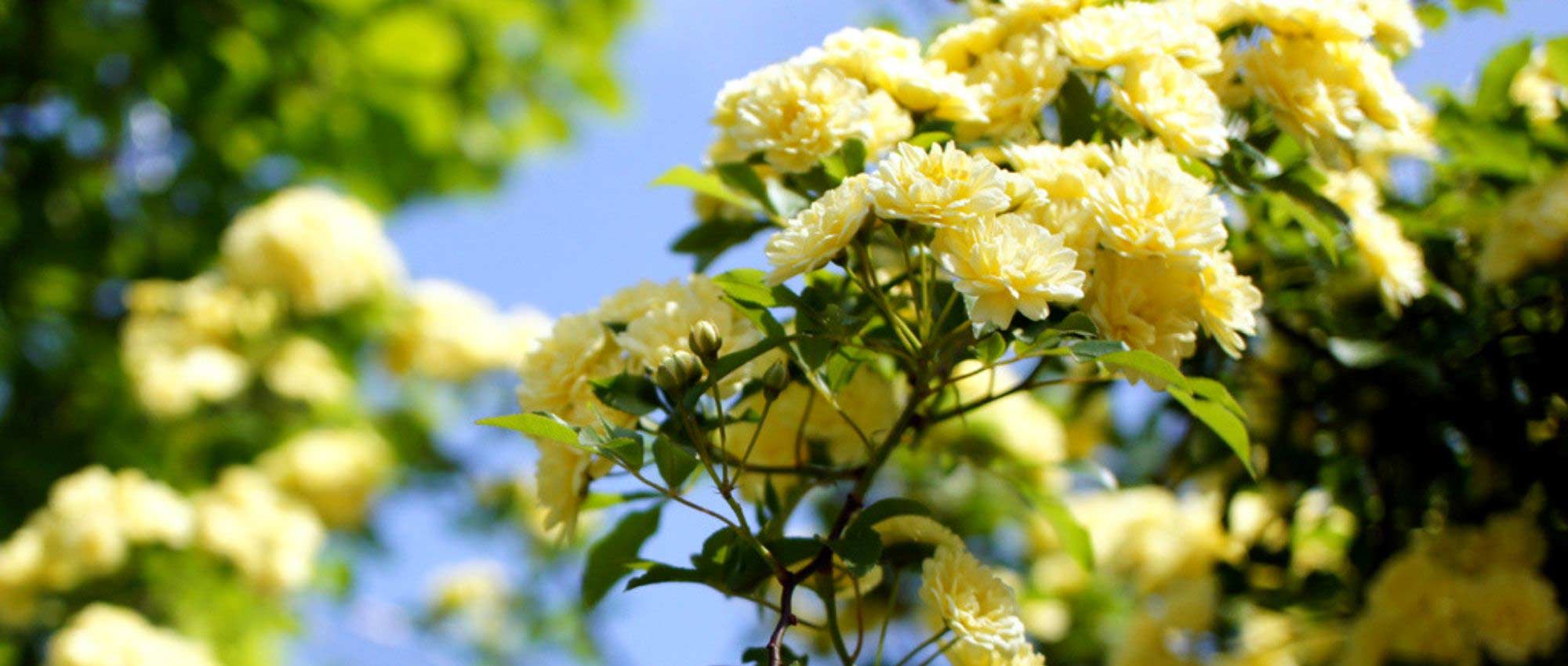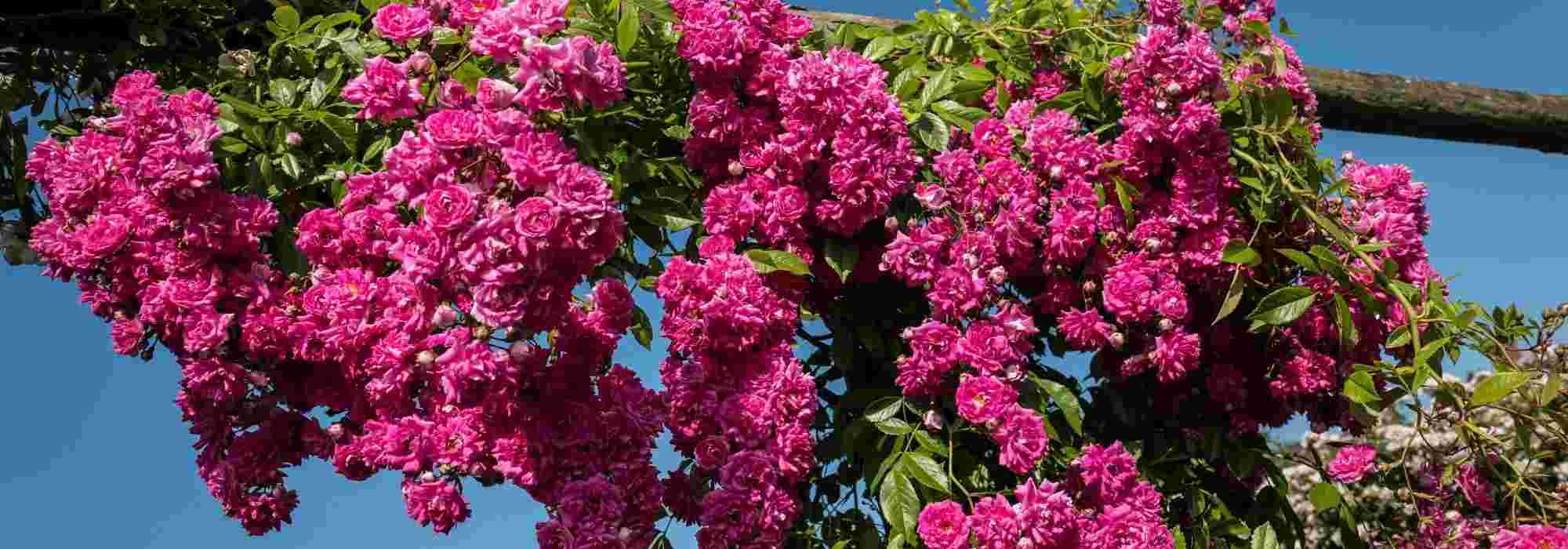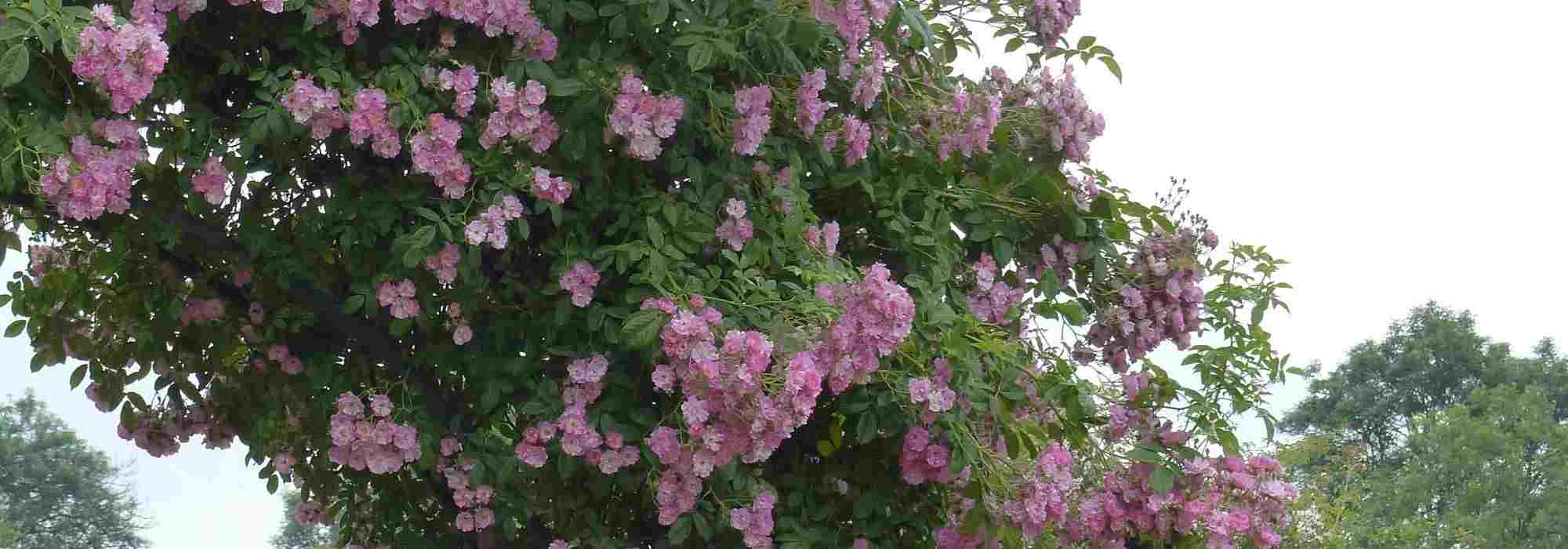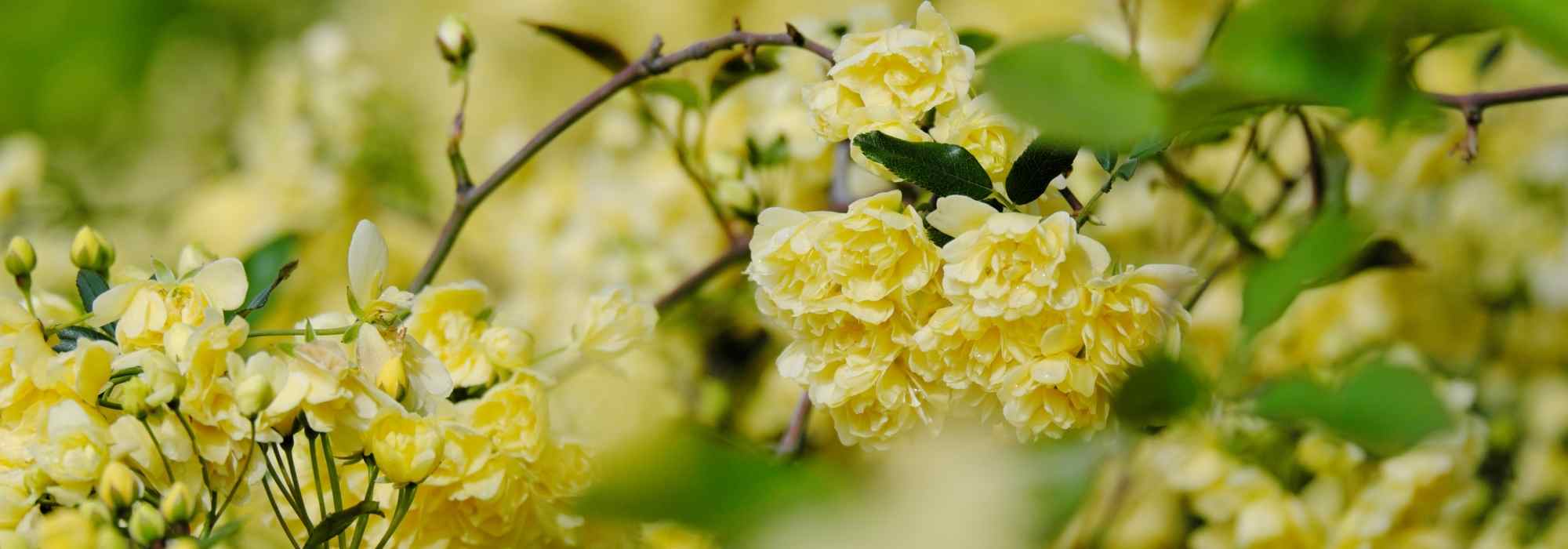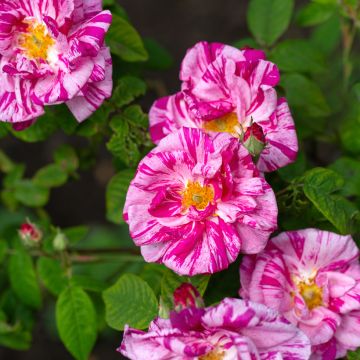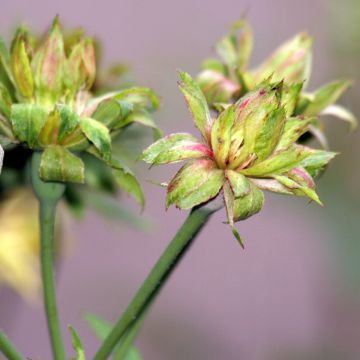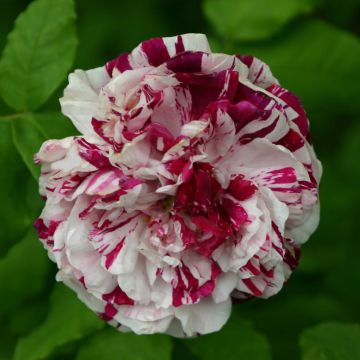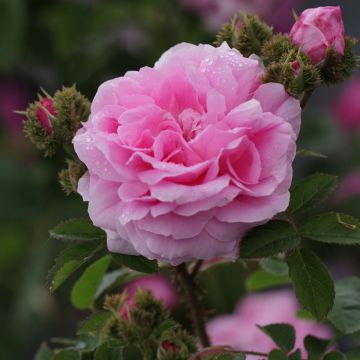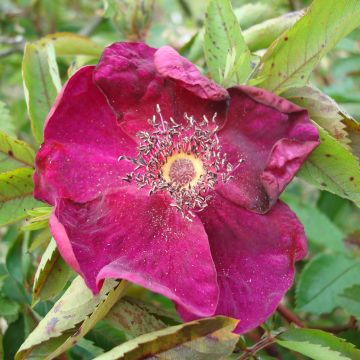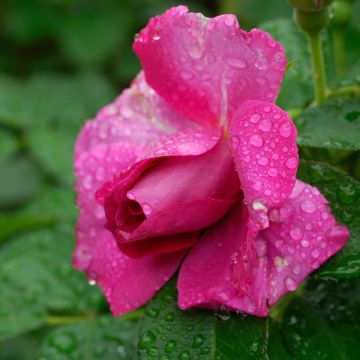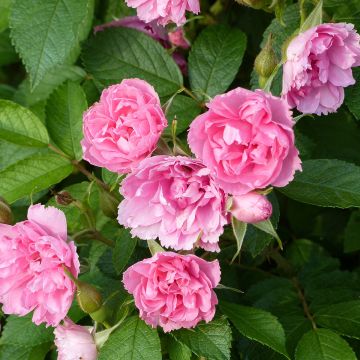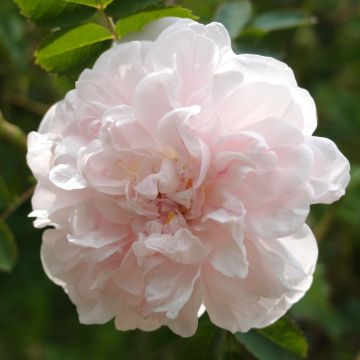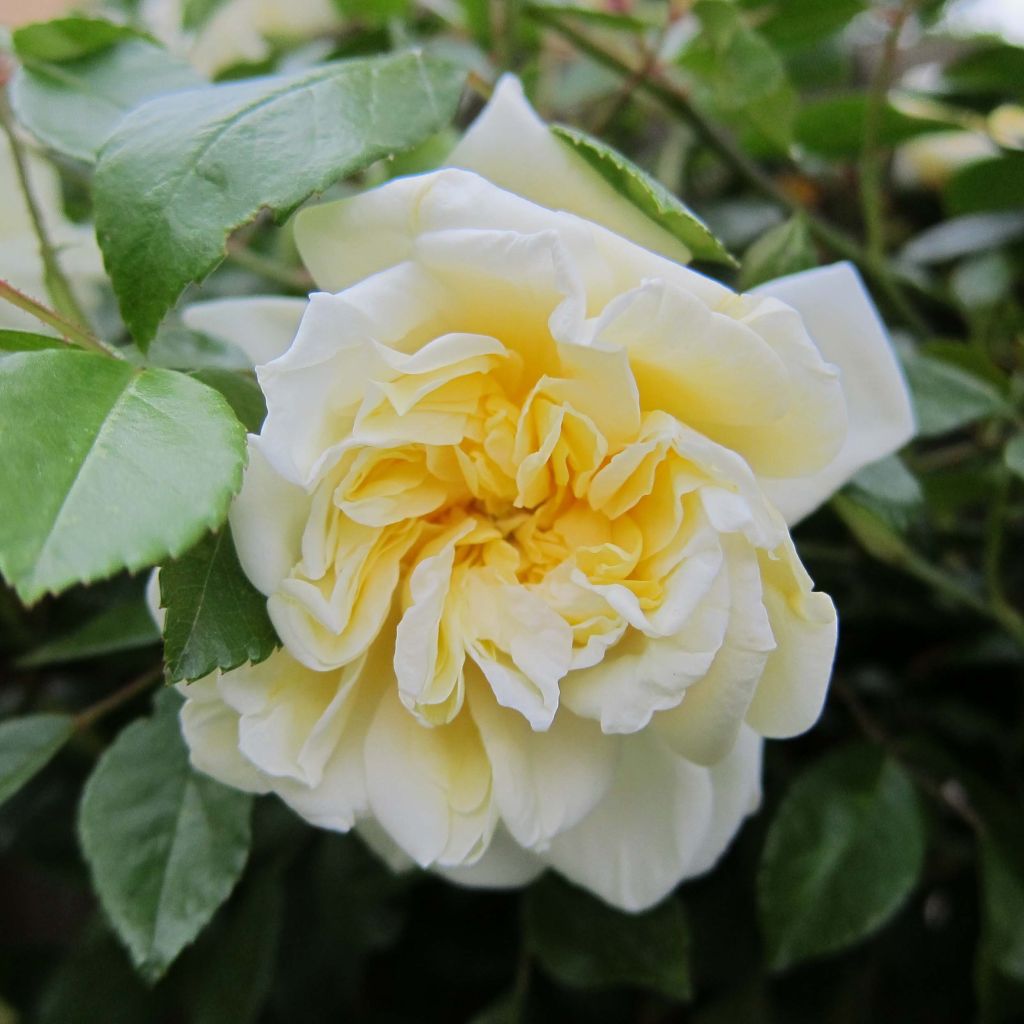

Rosa x wichuraiana Albéric Barbier - Climbing Rose
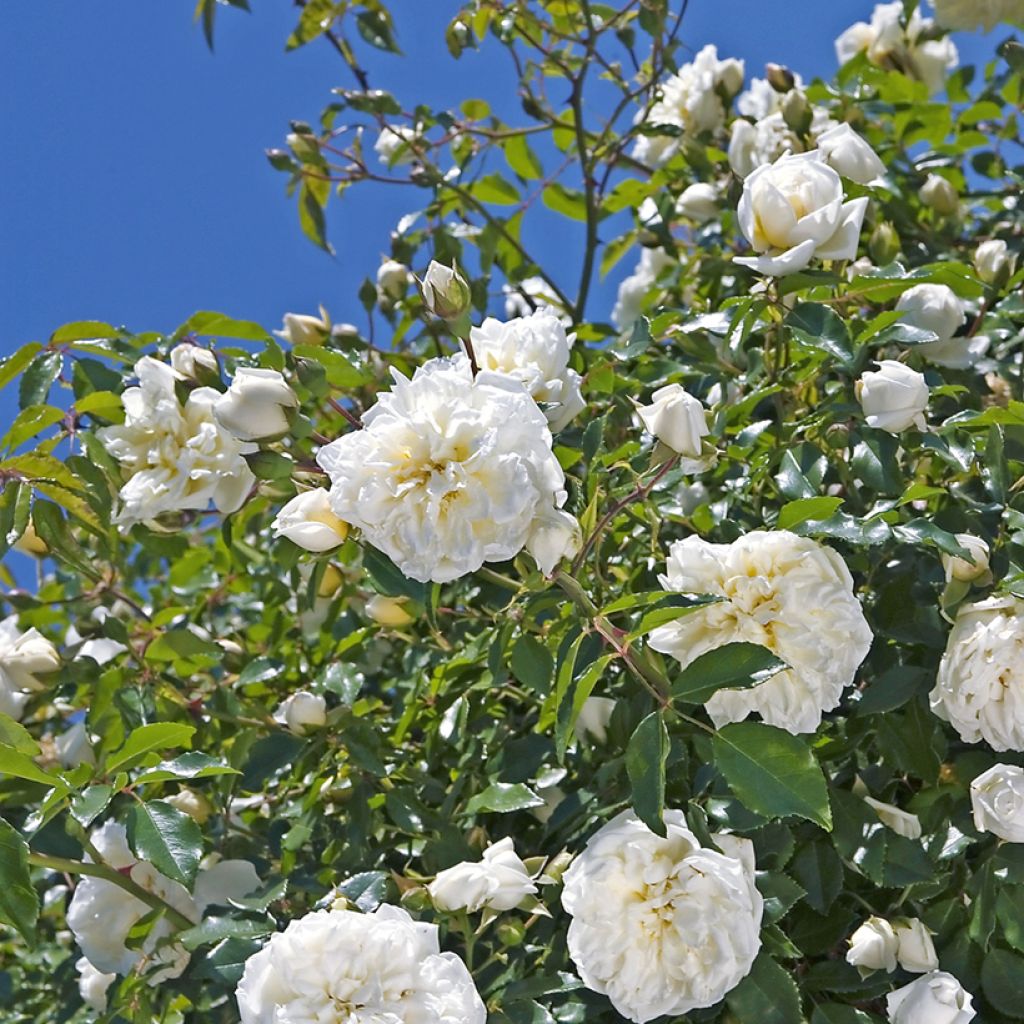

Rosa x wichuraiana Albéric Barbier - Climbing Rose
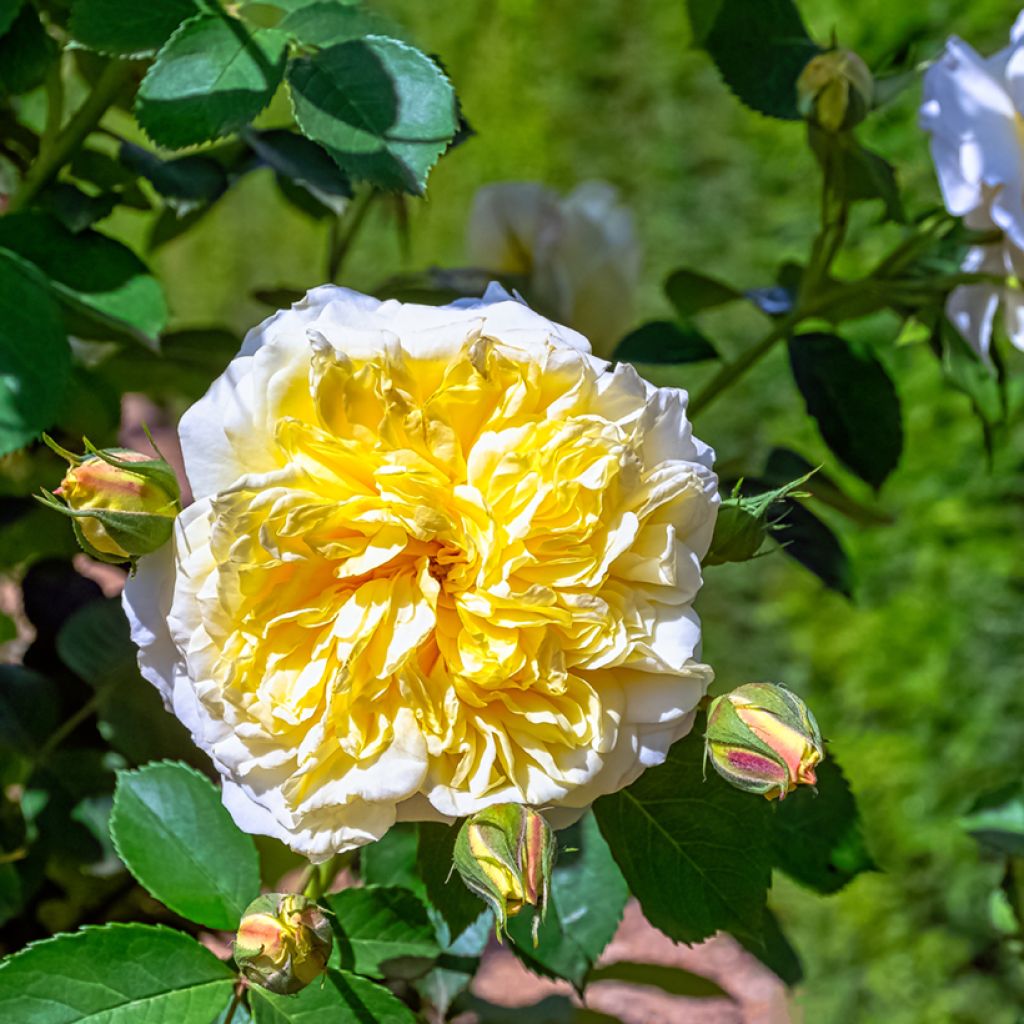

Rosa x wichuraiana Albéric Barbier - Climbing Rose


Rosa x wichuraiana Albéric Barbier - Climbing Rose
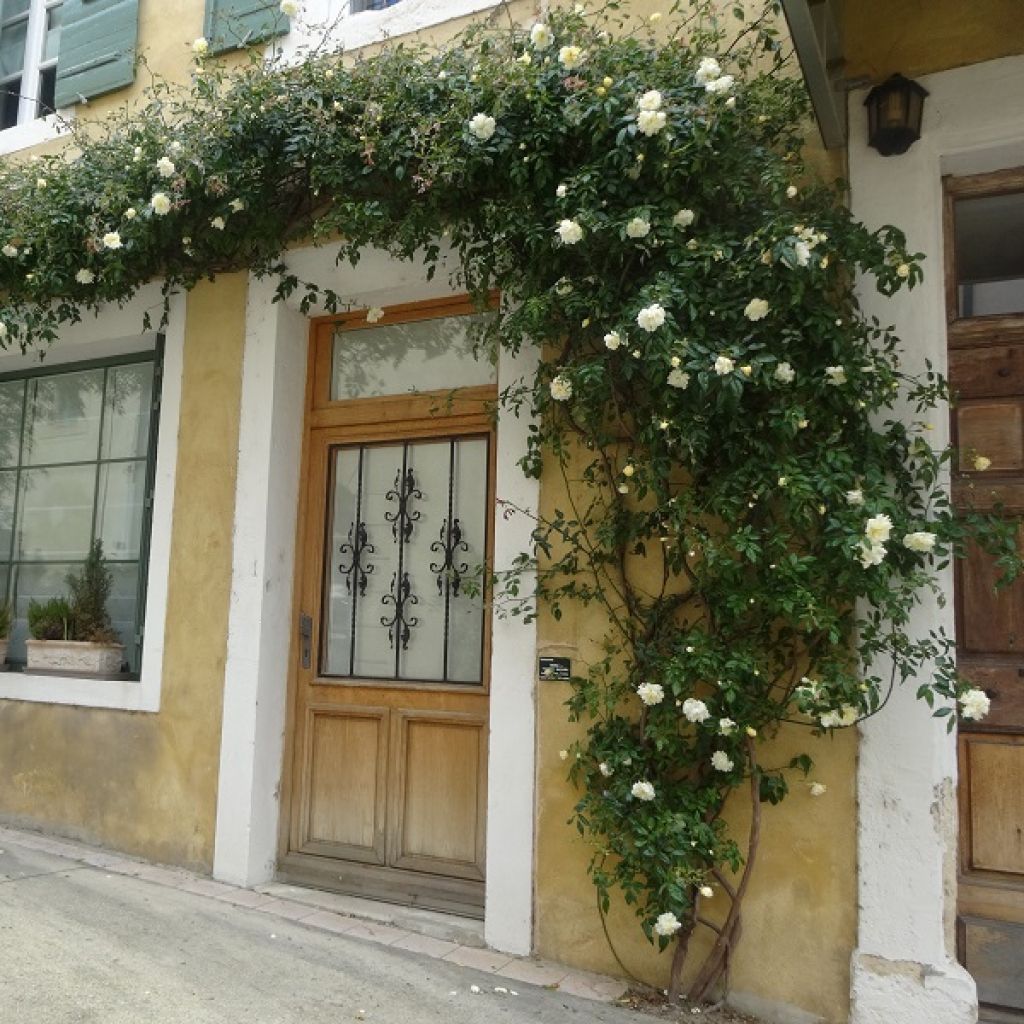

Rosa x wichuraiana Albéric Barbier - Climbing Rose
Rosa x wichuraiana Albéric Barbier - Climbing Rose
Rosa x wichuraiana Albéric Barbier
Memorial Rose, Wichuraiana Rose
Very fresh plant, young roots in the process of growing, just like the foliage. Buds currently in progress and yet to come. Quality: No issues!
Mado, 07/06/2023
Special offer!
Receive a €20 voucher for any order over €90 (excluding delivery costs, credit notes, and plastic-free options)!
1- Add your favorite plants to your cart.
2- Once you have reached €90, confirm your order (you can even choose the delivery date!).
3- As soon as your order is shipped, you will receive an email containing your voucher code, valid for 3 months (90 days).
Your voucher is unique and can only be used once, for any order with a minimum value of €20, excluding delivery costs.
Can be combined with other current offers, non-divisible and non-refundable.
Home or relay delivery (depending on size and destination)
Schedule delivery date,
and select date in basket
We guarantee the quality of our plants for a full growing cycle, and will replace at our expense any plant that fails to recover under normal climatic and planting conditions.

Description
The 'Albéric Barbier' Rose is a climber as charming as it is robust, comfortable everywhere. This vigorous old rose produces flexible stems with beautiful dark green and shiny foliage, almost evergreen, where creamy-coloured roses ounge: very double, with a pleasant fragrance. Grouped in small clusters, its pretty yellow buds bloom for almost 5 weeks in late spring or early summer. Like most climbing roses, it ionly occasionally reflowers in autumn depending on the soil and climate, but this sturdy variety has the advantage of thriving even in poor, semi-shaded, or even shady soils in warm climates.
The 'Albéric Barbier' Rose, obtained in 1900 by René Barbier, is the result of a cross between the Wichura Rose (synonym Rosa luciae), a botanical species native to East Asia, and the hybrid tea rose 'Shirley Hibberd'. Awarded the Award of Garden Merit in England, it once made the fortune of its creator, who went as far as Ohio to find the strains of their vigorous Asian ancestor.
'Alberic Barbier' easily reaches a height of 5 to 6m (16 to 20ft) with a spread of about 3m (10ft). Its long, flexible stems are very thorny and covered with small dark green, shiny foliage, particularly ornamental, which remains on the plant quite late in the season. The flowers of this climber, mainly flowering in summer, form in May-June, more or less early depending on the region. They emerge on short shoots from the 2nd year, as Naples yellow buds. They open into very double, somewhat disordered roses, 6 to 7cm (2 to 3in) in diameter, gathered in small bouquets along the stems. Yellow buds and more or less pale yellow to ivory white ruffled flowers coexist on the plant. They are surrounded by a pleasant fragrance of medium intensity. Sometimes there is a slight reflowering in late summer, in cool soil. This very vigorous and drought-resistant rose can, however, be, depending on the growing conditions, susceptible to powdery mildew.
With 'Albéric Barbier', we enter the select circle of climbing roses that nothing discourages. Like 'Albertine', 'New Dawn', 'Felicia', 'American Pillar', or even 'May Queen', it is particularly interesting for bringing lushness and colour to difficult or somewhat shaded areas of the garden. Strong, undemanding, and frugal, it will be happy in the north as well as the south of our region, with some care at planting. Like other large climbers, it can easily hide an ugly construction or climb a sturdy tree. The Trio 'Alberic Barbier', 'Albertine', and 'Alchemist', intertwined with each other in a harmony of colours and fragrances, is a pure wonder in June.
Rosa x wichuraiana Albéric Barbier - Climbing Rose in pictures


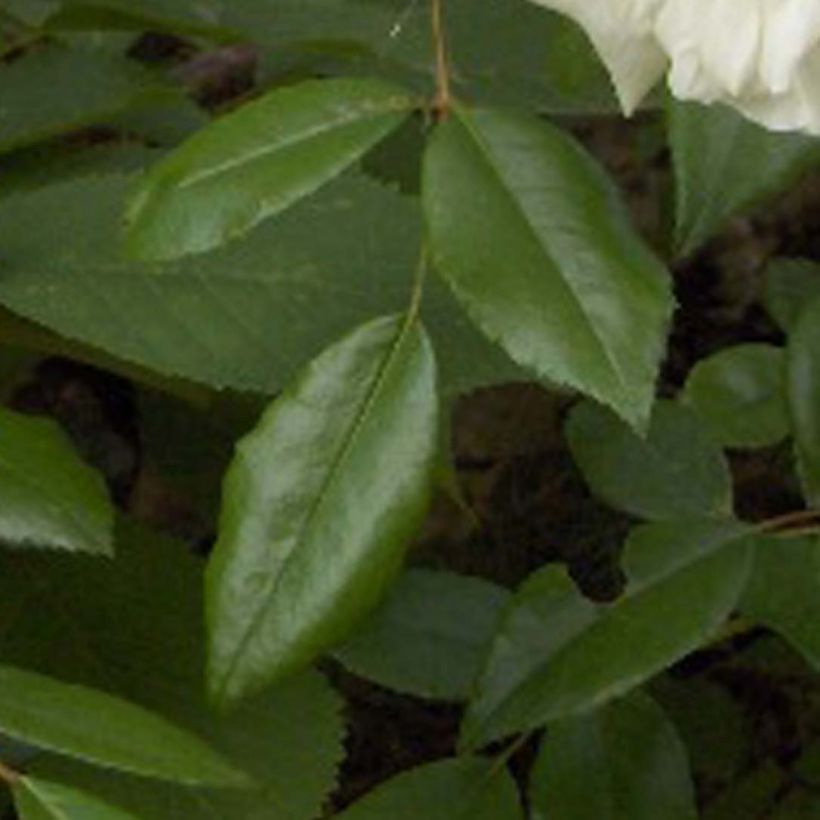

Plant habit
Flowering
Foliage
Botanical data
Rosa
x wichuraiana
Albéric Barbier
Rosaceae
Memorial Rose, Wichuraiana Rose
Cultivar or hybrid
Rosa canina Laxa (Wrapped bare root, 4L/5L pot)
Planting and care
The'Albéric Barbier' rose adapts to all types of soil, even heavy or sandy, moist to dry in summer, as long as the planting is taken care of and it does not lack water for its establishment or food. Plant it in well-prepared and well-drained ordinary soil and in a sunny or semi-shaded position, or even in shade in hot and very sunny climates. Plant it in autumn, never when it freezes. Monitor watering for the first 2 or 3 summers, and apply a slow-release rose fertiliser every year at the start of the growing season.
The branches that are 2 years old are the most floriferous. It is useful to prune the stems that bloomed the previous year to 3 or 4 buds, or cut them to 15 cm (6in). The new sturdy stems will be trained and the old ones removed if necessary. Fairly hardy, this rose can withstand temperatures as low as -15°C (5°F), and if, despite everything, after a harsh winter, the branches freeze to the ground, this climber will regrow from the base in spring, particularly if the plant has become detached from its graft by burying the graft point deep enough to be insulated from cold. It may be useful to remove dead wood in winter and remove faded flowers if fruit formation is not desired. If necessary, in spring, after the risk of frost, a light pruning can be done. Alternatively, climbing roses can be allowed to grow freely if there is ample space.
If you plant a climbing rose next to a living tree, the rose's root system will compete with that of the already well-established tree. To control watering, a trick is to plant the rose in a large container with a perforated bottom, at the base of the tree: the tree's roots will not penetrate the container for at least a year. Remove the container after 1 year, for example by cutting one side, without disturbing the rose's root system. The rose will have had time to develop its root system deeply and will be more resistant.
Planting period
Intended location
Care
Planting & care advice
-
, onOrder confirmed
Reply from on Promesse de fleurs
Similar products
Haven't found what you were looking for?
Hardiness is the lowest winter temperature a plant can endure without suffering serious damage or even dying. However, hardiness is affected by location (a sheltered area, such as a patio), protection (winter cover) and soil type (hardiness is improved by well-drained soil).

Photo Sharing Terms & Conditions
In order to encourage gardeners to interact and share their experiences, Promesse de fleurs offers various media enabling content to be uploaded onto its Site - in particular via the ‘Photo sharing’ module.
The User agrees to refrain from:
- Posting any content that is illegal, prejudicial, insulting, racist, inciteful to hatred, revisionist, contrary to public decency, that infringes on privacy or on the privacy rights of third parties, in particular the publicity rights of persons and goods, intellectual property rights, or the right to privacy.
- Submitting content on behalf of a third party;
- Impersonate the identity of a third party and/or publish any personal information about a third party;
In general, the User undertakes to refrain from any unethical behaviour.
All Content (in particular text, comments, files, images, photos, videos, creative works, etc.), which may be subject to property or intellectual property rights, image or other private rights, shall remain the property of the User, subject to the limited rights granted by the terms of the licence granted by Promesse de fleurs as stated below. Users are at liberty to publish or not to publish such Content on the Site, notably via the ‘Photo Sharing’ facility, and accept that this Content shall be made public and freely accessible, notably on the Internet.
Users further acknowledge, undertake to have ,and guarantee that they hold all necessary rights and permissions to publish such material on the Site, in particular with regard to the legislation in force pertaining to any privacy, property, intellectual property, image, or contractual rights, or rights of any other nature. By publishing such Content on the Site, Users acknowledge accepting full liability as publishers of the Content within the meaning of the law, and grant Promesse de fleurs, free of charge, an inclusive, worldwide licence for the said Content for the entire duration of its publication, including all reproduction, representation, up/downloading, displaying, performing, transmission, and storage rights.
Users also grant permission for their name to be linked to the Content and accept that this link may not always be made available.
By engaging in posting material, Users consent to their Content becoming automatically accessible on the Internet, in particular on other sites and/or blogs and/or web pages of the Promesse de fleurs site, including in particular social pages and the Promesse de fleurs catalogue.
Users may secure the removal of entrusted content free of charge by issuing a simple request via our contact form.
The flowering period indicated on our website applies to countries and regions located in USDA zone 8 (France, the United Kingdom, Ireland, the Netherlands, etc.)
It will vary according to where you live:
- In zones 9 to 10 (Italy, Spain, Greece, etc.), flowering will occur about 2 to 4 weeks earlier.
- In zones 6 to 7 (Germany, Poland, Slovenia, and lower mountainous regions), flowering will be delayed by 2 to 3 weeks.
- In zone 5 (Central Europe, Scandinavia), blooming will be delayed by 3 to 5 weeks.
In temperate climates, pruning of spring-flowering shrubs (forsythia, spireas, etc.) should be done just after flowering.
Pruning of summer-flowering shrubs (Indian Lilac, Perovskia, etc.) can be done in winter or spring.
In cold regions as well as with frost-sensitive plants, avoid pruning too early when severe frosts may still occur.
The planting period indicated on our website applies to countries and regions located in USDA zone 8 (France, United Kingdom, Ireland, Netherlands).
It will vary according to where you live:
- In Mediterranean zones (Marseille, Madrid, Milan, etc.), autumn and winter are the best planting periods.
- In continental zones (Strasbourg, Munich, Vienna, etc.), delay planting by 2 to 3 weeks in spring and bring it forward by 2 to 4 weeks in autumn.
- In mountainous regions (the Alps, Pyrenees, Carpathians, etc.), it is best to plant in late spring (May-June) or late summer (August-September).
The harvesting period indicated on our website applies to countries and regions in USDA zone 8 (France, England, Ireland, the Netherlands).
In colder areas (Scandinavia, Poland, Austria...) fruit and vegetable harvests are likely to be delayed by 3-4 weeks.
In warmer areas (Italy, Spain, Greece, etc.), harvesting will probably take place earlier, depending on weather conditions.
The sowing periods indicated on our website apply to countries and regions within USDA Zone 8 (France, UK, Ireland, Netherlands).
In colder areas (Scandinavia, Poland, Austria...), delay any outdoor sowing by 3-4 weeks, or sow under glass.
In warmer climes (Italy, Spain, Greece, etc.), bring outdoor sowing forward by a few weeks.


































